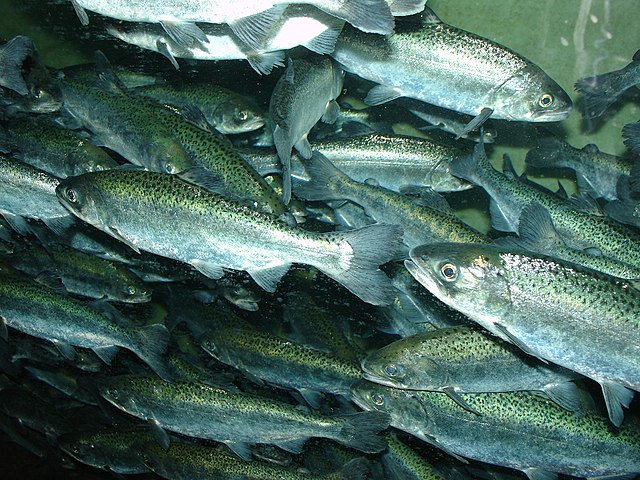Commercial harvest returns for three salmon species on the Prince William Sound (PWS) in southern Alaska has ended 3% below the decade’s parity.
The Alaska Department of Fish & Game (ADFG) reported on November 4 that Alaska cumulatively landed 194.8 million salmon, up 88% annually. This figure updated an earlier September 2025 preliminary landings’ data, then at 185 million fish.
Some 51.6 million units in the final landings’ tally were from the Sound, 41.8 million of which commercial.
Financially, the 2025 PWS’ harvest was worth $90.99 million, a 3% drop from the decade’s median of $93.7 million.
The near-decade average posting owes to three species in diverse districts, including pink salmon from the Eastern District.
Pink salmon are abundant here, with the PWS harvesting 26% of the statewide resource, per an ADFG hatchery survey.
The Sound received a 2025 pink salmon estimate run of 66.7 million fish, with a catch target of 56.12 million. However, the commercial harvest garnered 36.72 million fish or 35% below par.
Copper River District’s sockeye salmon riches also helped contribute to a region-wide final run forecast of 2.64 million sockeye.
The total sockeye harvest including that in this district hit 840,000 units, 2% more than the decade-long median of 824,000.
A third trending species was chum salmon, which exceeded expectations especially at the remote hatchery of Port Chalmers Subdistrict.
The chum catch hit 3.5 million units or 73% above the 1.9-million unit forecast, courtesy mainly the Prince William Sound Aquaculture Corporation.
Some 243,000 or so pinks were from wild sources other than hatcheries, according to an ADFG estimate.
Purse seine commercial landings represented 36.51 million, 0.74 million and 55,100 pink, chum and sockeye salmon units, respectively.
The commercial salmon season’s results for the PWS came after those of Pacific salmon in the larger Alaska earlier in September. To learn more about this fishery’s historical landings’ results, skim the below data.
Prince William Sound Salmon Statistics
The Prince William Sound in southern Alaska constitutes 38,000 square miles of land, per the Alaska Department of Fish and Game (ADFG). Salmon-rich rivers like Copper River complement land hatcheries on the Sound. Beginning 1990 through 2024, salmon landings hovered between 9,275,712 units at the lowest (1993) and 101,323,257 units at the highest (2015). The table below, an interpretation of the ADFG’s data, presents the highest and lowest catches during this period:
| Highlight Year | Landings [total fish units rounded up to the nearest decimal point] |
| 2024 | 15.031 million |
| 2023 | 66.357 million |
| 2020 | 25.844 million |
| 2015 | 101.323 million |
| 2005 | 64.6 million |
| 1995 | 19.37 million |
| 1993 | 9.275 million |
Which salmon species lead the PWS salmon harvest?
Pink salmon leads annual harvests on the Prince William Sound whereas sockeye follows. In the 2025 season, for instance, 36.72 million fish had undergone harvesting by early November. Historical production however has sometimes gone to as high as 95.65 million units, as of 2015.
The ten-year average catches in the 2014-23 period by species were as follows: pink salmon rated at over 44.58 million fish while sockeye at over 1.985 million fish. Coho followed at 376,876 fish while chinook finished at above 13,731 fish.
